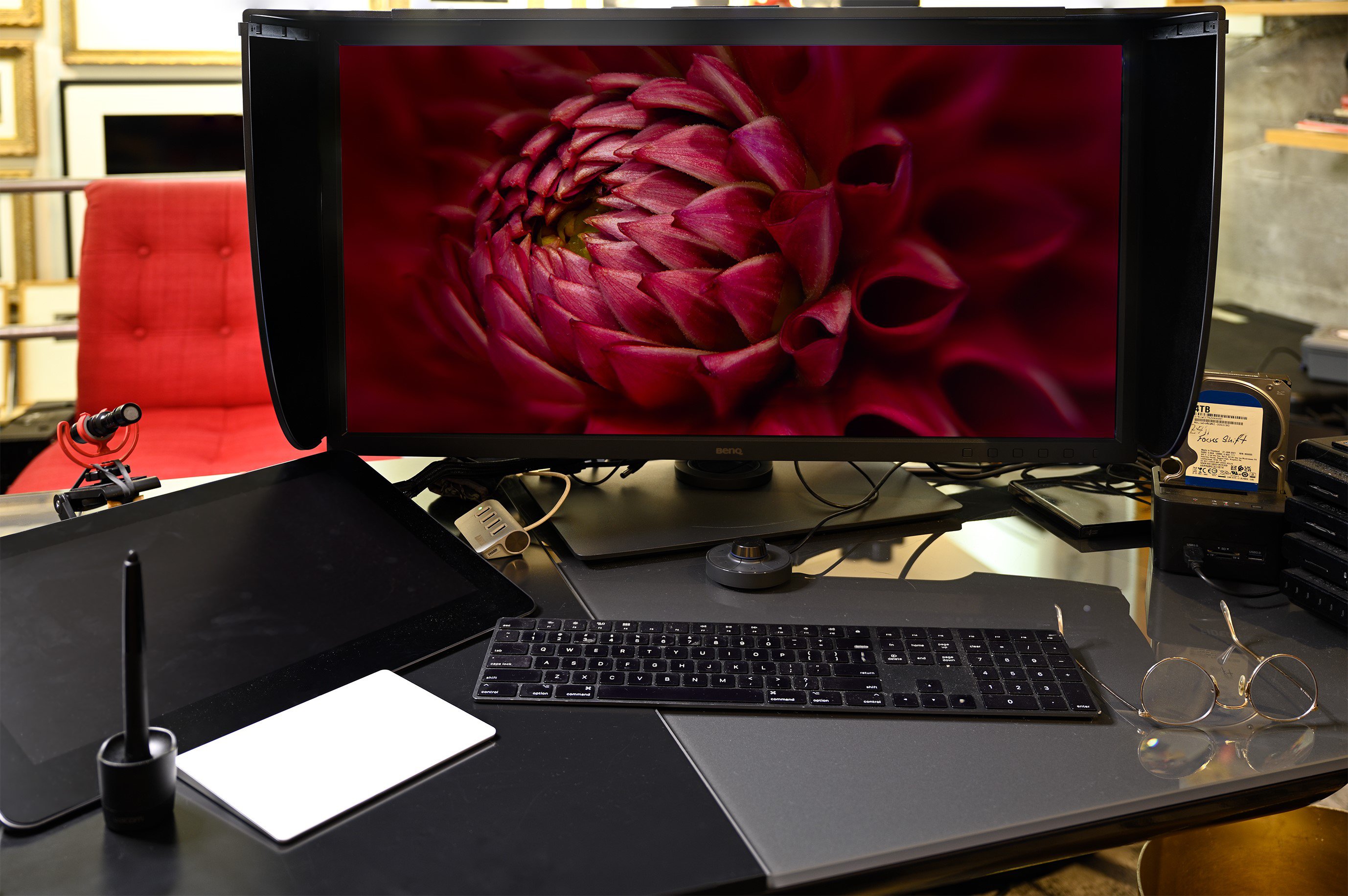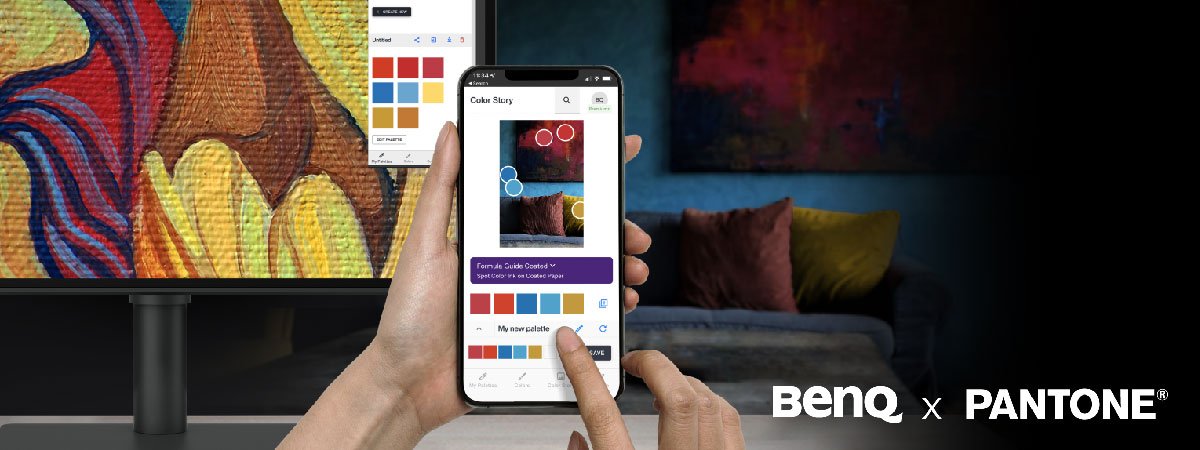The eye perceives your personal reality. As a photographer, it is with the eye that I witness the world in such a way that when I click the shutter and both capture and am captured by the moment. The image that results holds a piece of me and the moment in which I found myself. My job is to move the viewer of my images the same way that I was moved; to make images in which you hear the wind, the laughter of a child, smell the fragrance of the flower or feel the power of a waterfall.
For me, the camera’s lens is my brush. The sensor is the canvas. The file is the sheet music and the final print is always the symphony.
I believe that the more you know about the tools you use, the better a visual artist you will be. I also believe that the weakest link in an artist’s world should be the artist. I never want my tools to be the reason an image is anything less than I wanted it to be. Since the eye perceives your personal reality, the monitor I use has to help me shape and reflect the reality that I photograph. And that is why the monitor I choose, and have chosen for the past six years, to see the soul and heart of my images and to use for approval color, is a BenQ - specifically the SW321C monitor.
The needs, requirements and demands of a digital visual artist, whether they are working with motion or still, have grown over the years to the point where they have converged. Still cameras are now more than capable of rendering 4K video and video cameras are capable of having individual frames extracted from them. The SW321C monitor is capable of handling the demands of both. As a still photographer, all the images that I post-process are done so with the intent of being made into fine art prints. The SW321C is at 4K resolution, which means that I can actually see what the fine details of the print will actually look like at the size I will print it. In addition, as well as having AQCOLOR Technology, second generation uniformity technology, the SW321C is equipped with an anti-glare/anti-reflective panel that offers me a preview that is much closer to the final print than other monitors afford.
But more importantly, it is the AQCOLOR Technology that gives the SW321C superior color fidelity. In the worlds of fine art and commercial photography, the worlds in which I live, the math of success is simple. Whoever controls the integrity of an image’s color wins. Regardless of whether it is the full spectrum of colors or if it is the chromatic grayscale (a black and white image derived from equal values of red green and blue). When you own the color, you own the image. When you own the image, you own the viewer’s eye as it looks at your image. Period.
What that means is that the SW321C is capable of delivering 99% Adobe RGB, 100% of sRGB and Rec. 709. It is also capable of rendering 95% DCI-P3 and Display P3. The monitor also has HDR technology that offers support for video formats HDR10 and HLG with a 16 bit, 3D LUT. Also, the SW321C has hardware calibration and GamutDuo capability. Lastly, the monitor is rated to perform at this level for 30,000 hours.
That is a lot of numbers and whizz-bang jargon, so let’s break that down.
- Adobe RGB is the color of choice from which to print. Adobe RGB in 8 bit is capable of producing 16.77 million colors (256 x 256 x 256 = 16,777,216). The SW32c is also capable of displaying 1.07 billion colors.
- sRGB The traditional colorspace of the internet is sRGB. Rec. 709 is the color space of HD video. Rec. 709 is the same colorspace as sRGB, but uses a different gamma. Both sRGB and Rec. 709 have a non-linear curve for displaying luminance values for a specific color. Rec. 709 is the preferred for HD cable, Blu-ray discs, and is used by most of today’s streaming video platforms.
- DCI-P3 and Display P3 are color spaces that are bigger than sRGB, but smaller than Adobe RGB. These are the color spaces most commonly used by handheld tablets and mobile devices.
- HDR (high dynamic range) has a dynamic range of at least 13 stops. SDR (standard dynamic range) has a dynamic range that is between 6 and 10 stops. Because of the larger dynamic range, HDR video can produce whiter whites with significantly more shades of gray from black to white than can SDR. In practice, HDR preserves more details in the deepest of shadows and in the brightest highlight areas. Also, the larger dynamic range of HDR means it has a greater color gamut. The greater the color gamut, the more colors the device can display.
- 16 Bit - 16 bit means this: 8bit is 8 bits of data per channel. Computer data is expressed in ones or zeros (1/0). The math then is 2 to the power of 8. This creates a value range of 0-255. 16 bit means 16 bits of data per channel. Again computer data i is expressed in ones or zeros (1/0). The math then is 2 to the power of 16. This creates a value range of 0-65535. Or 65536 levels of gradations.
- 3D LUT- 3D look up tables (LUT) are the most suitable for accurate calibration as they can deal with all display calibration issues, from simple gamma, gamut and tracking errors, saturation, hue, brightness issues, correcting advanced non-linearity attributes, color crosstalk, in other words all possible display calibration errors
- Hardware calibration- Nothing is more important than frequently calibrating your monitor. It should be done at least once a week. Monitor calibration guarantees, first that you will get the most that your monitor can deliver. Second, It means that the colors you see on the screen are the colors that you will get in the final out-put, be it in print or motion and will look the same and reflect the reality of the colors captured. Both types of calibration require you use a monitor calibration device like the Cali-brite Display Pro. The primary difference between hardware and software calibration is this: both types of calibration create a look up table (LUT) specific to the monitor that was calibrated. When using software color calibration, the LUT is stored on your computer where the color corrections are software-processed first, and the corrected RGB values are then sent to the monitor. A hardware LUT, which is used for hardware calibration, is stored on a dedicated chip inside the display. This means that the software-based calibration LUT needs to be reloaded every time you reboot your computer and works only with that computer's video signal. A hardware-calibrated monitor will be color accurate regardless of the source or computer to which you connect it.
- Gamut Duo function allows me to simultaneously view an image in two different color spaces. That means that I can see how it will look as a print or on a tablet, a smartphone or on the Internet. No guesswork! I have a real time understanding of how my images will look.
- 30000-hour life expectancy means is that if you run the monitor eight hours a day, five days a week, for fifty weeks a year, the life expectancy of the monitor is 15 years. (8 x 5 = 40. 40 x 50 = 2,000. 30,000 ÷ 2,000 = 15)
Because I believe that the weakest link in an artist’s world should be the artist and not one of his/her tools, and because I never want to be limited by anything except my imagination, I use BenQ monitors in my studio and, when situations permit, in the field as well. My images would be a whole lot less without the many “mores” that a BenQ SW321C monitor brings to my party.


